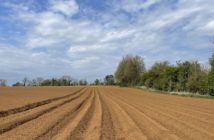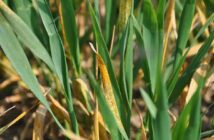Growers are being warned that delaying light leaf spot (LLS) sprays until soil temperatures fall sufficiently to allow a combined application with Kerb (propyzamide) could be costly. That’s the view of TAG agronomist Jon Bellamy.
He points out that propyzamide is only active in the top 5cm of soil and it is important that black-grass rooting zone isn’t too deep. He fears that by the time soil temperatures reach the desired 10 (°C) degrees at 30cm and falling mark it could be too late this season. “You’ve got to adequately protect against both problems. If black-grass roots become established then you can be left with an almost impossible situation. The same applies to LLS which is in my view now as great a concern as Phoma. I would suggest it is better to apply propyzamide in combination with a fungicide now and see a possible slight reduction in black-grass control than risk holding off and seeing black-grass become well established combined with poor disease control too,” he warns.
Another reason Mr Bellamy wants sprays applied now is that leaf wetness is likely to increase as we move into December. “The longer you delay the more likely it is that spray opportunities will decline. My preference for applications from mid-November is to combine Kerb with a robust LLS and Phoma product such as Proline275 (prothioconazole) as they are highly tank mix compatible. But even well formulated products will not work as designed if applied in compromised conditions,” he concludes.



